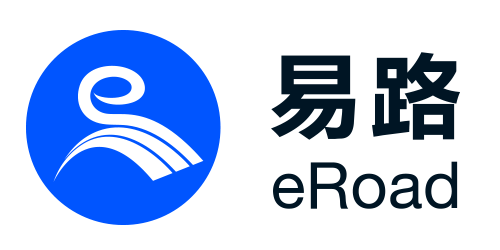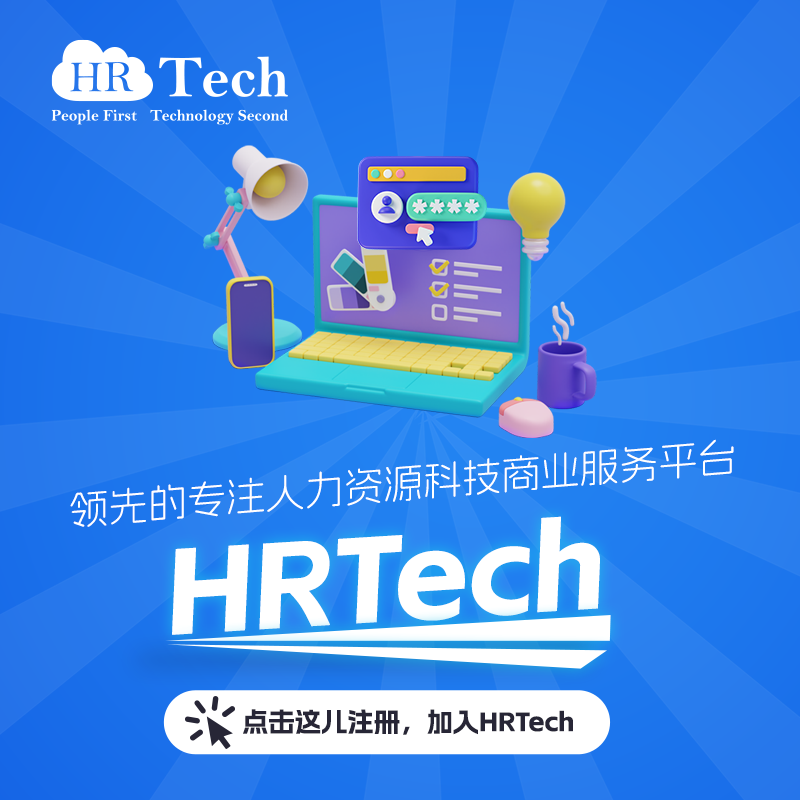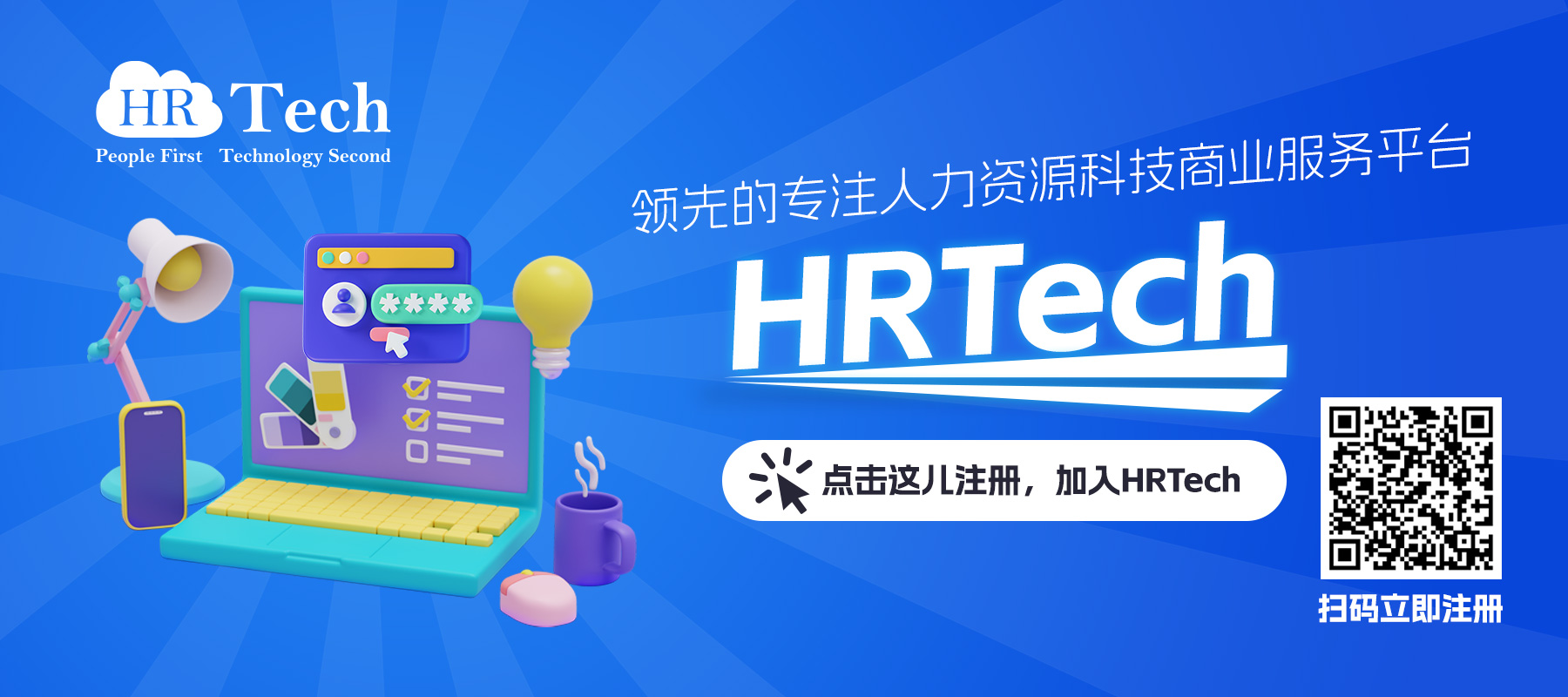资讯
【美国】AI招聘平台Mercor以2.5亿美元估值获得3000万美元A轮融资,利用AI创造就业机会
Mercor 宣布以 2.5 亿美元的估值获得 3000 万美元的 A 轮融资。本轮融资由Benchmark的Victor Lazarte和Bill Gurley领投,General Catalyst、Peter Thiel、Jack Dorsey、Adam D'Angelo、Larry Summers、Chris Re等参与了本轮融资。Benchmark 的 Victor Lazarte 将加入董事会,继续支持 Mercor 的成长和发展。
Mercor 是一个人工智能招聘平台,帮助顶级科技公司和领先的人工智能实验室招聘软件工程、法律、化学、金融和其他许多专业的专家。
“我们相信,每个求职者在申请工作时都应该有机会接受面试,"Mercor 的联合创始人兼首席执行官布兰登-弗迪(Brendan Foody)说。“目前的招聘流程是根据传统的简历信号而非人的能力来选择应聘者。人工智能可以做得更好。”
联合创始人布伦丹-弗迪(Brendan Foody)、阿达什-希尔马特(Adarsh Hiremath)和苏里亚-米达(Surya Midha)在湾区高中时因参加辩论赛而相识,在乔治城大学和哈佛大学读大学一年级时就开始酝酿创建公司。2023 年,他们退学并开始创建 Mercor 公司。今年早些时候,三位创始人都获得了泰尔奖学金。
自公司成立以来,他们的候选人数已超过 30 万,在全球范围内创造了数千个工作岗位。该团队使用人工智能模型来更好地评估求职者的技能组合,并预测他们在特定岗位上的表现能力。
为了庆祝他们最近取得的进展和宣布的融资,Mercor 将为所有人提供免费的简历和面试反馈,这对求职者来说是一项传统上无法获得或昂贵的资源。
资讯
【德国】人力资源科技初创公司Become.1获得330万欧元种子轮融资
Become.1 是一家总部位于德国海德堡的人力资源科技初创公司,获得了 330 万欧元的种子轮融资。
本轮融资由 D11Z.Ventures、Haufe Group Ventures、MBG Baden-Württemberg、High-Tech Gründerfonds (HTGF) 以及 Matthias Allmendinger(Taxdoo)、Sebastian Koch(前毕马威会计师事务所)和 Maru Winnacker(Urania Ventures)等天使投资人领投。HTGF 和其他天使投资人已经参与了 2022 年的种子轮融资,其中包括 Thomas Otter(Acadian Ventures)和 Michal Jarocki(前德国商业银行)等投资者。
公司打算利用这笔资金进一步扩大其员工福利一体化平台。
Become.1 是一家人力资源技术初创公司,由联合创始人兼首席执行官 Friedrich Villhauer 和 David Wambsganss 领导,旨在通过其软件减少雇主的管理工作量,为员工提供最大的灵活性,使员工福利更容易获得和使用。这些福利可以安全地进行管理,并集成到现有的人力资源管理(HRM)和薪资系统中。该平台面向德国公司,但也为其他欧洲国家的员工提供解决方案,包括奥地利、瑞士、荷兰、西班牙、英国和卢森堡。
公司目标是提供全方位的员工福利解决方案,消除税务法规的复杂性,满足员工的不同需求。我们的目标是改善工作体验,提高团队生产力,提升整体生活满意度。我们为各种规模的组织提供量身定制的工具,旨在树立员工福利的新标准。
公司目前有近 30 名员工,已经赢得了数百家中小企业和初创公司的客户,其中包括 Hypoport、Stadler Rail、Knuspr、Diconium 和 Eurofins Genomics。
资讯
【必读】Workday Ventures最新的10项AI投资,推动了Workday客户和行业的创新
帮助企业管理员工和资金的领先解决方案提供商 Workday 公司(纳斯达克股票代码:WDAY)宣布,Workday 公司的战略资本部门 Workday Ventures 将继续推动人工智能的发展。自2023年初以来,Workday Ventures已经进行了10项新的人工智能投资,这是其专注于人工智能创新的一部分,帮助企业永远向前发展。
“Workday公司企业发展高级副总裁Michael Magaro表示:"我们面临着令人难以置信的机遇,包括Workday Ventures可以通过多种方式帮助加速最新的人工智能创新,并将其与Workday不断增长的客户、合作伙伴和员工生态系统联系起来。“通过与有远见的人工智能公司合作,我们正在投资于有助于推动我们的客户和行业发展的最新技术。
用人工智能加速工作的未来。Workday Ventures 对提供最新人工智能技术的企业进行投资,以提高生产力,改善业务决策,支持不断变化的劳动力需求,包括寻找、保留和发展人才。最近的投资包括以下几家公司:
Censia 是一个人才智能平台,为员工和人力资源团队提供人工智能技能数据和洞察力,所有这些都在 Workday 等系统中实现。此次投资彰显了 Censia 的创新能力,并将其定位为通过负责任的人工智能革新人才管理的领先企业。
Glean,与公司所有数据相连的工作人工智能平台,使每个人都能在工作中利用人工智能查找知识、生成内容并自动执行任务。
Nayya 是一个福利智能平台,让员工能够选择和参与他们的福利。通过人工智能和数据分析的力量,Nayya 提供个性化的福利体验,简化了福利选择和全年使用的复杂性。有了这笔投资,Nayya 将继续推进其简化福利选择流程的使命,确保员工获得做出明智决策所需的工具和洞察力。
Sana,一家改变组织共享和获取知识方式的人工智能公司。
TechWolf,一家以人工智能为基础的技能基础设施公司,为企业提供数据,以识别和发展员工的技能。
Uplimit,一家人工智能驱动的在线学习平台,彻底改变了教育创建和交付方式。
利用人工智能简化业务流程。Workday Ventures 正在投资帮助客户简化和精简业务流程的解决方案,以帮助企业更快、更有效地发展。最近的投资包括:
Benepass 是一个灵活的福利平台,可将税前和税后支出账户整合到一张 Visa 卡上。
Oro Labs,采购协调、接收管理和供应商入职平台。
Tesorio,人工智能驱动的互联财务运营平台,汇聚全公司数据,推动可操作的洞察力和端到端自动化,加强现金流管理、订单到现金和协作,以推动资本高效的业务增长。
Vanta 是一个信任管理平台,帮助企业实现安全与合规流程自动化。
Workday Ventures 的投资组合公司正在扩大客户获取新技术的途径,这是 Built on Workday 计划的一部分,该计划使客户能够通过 Workday Marketplace 构建、管理和向客户销售应用程序。几家 Workday Ventures 公司还加入了 Workday AI Marketplace,该市场要求 AI 解决方案证明遵守了 Workday 负责任 AI 治理框架(Workday Responsible AI Governance Framework)。
关于 Workday
Workday 是一个领先的企业平台,帮助企业管理其最重要的资产--人员和资金。Workday 平台以人工智能为核心,帮助客户提升员工的能力,为工作增添动力,并推动业务永远向前发展。全球各行各业的 10,500 多家企业都在使用 Workday,其中既有中型企业,也有超过 60% 的财富 500 强企业。
资讯
【美国】AI驱动的人才智能解决方案提供商Censia获得Workday Ventures战略投资
人工智能驱动的人才智能解决方案领导者 Censia 宣布获得 Workday Ventures 的战略投资。此次投资彰显了 Censia 的创新能力,并将其定位为通过负责任的人工智能革新人才管理的领先企业。
“Workday Ventures 董事总经理兼高级副总裁 Barbry McGann 表示:"人工智能有可能彻底改变人才智能,使企业能够做出更明智的招聘决策、加强员工发展并优化劳动力分析。“我们很高兴宣布对 Censia 进行战略投资,支持他们通过先进的人才智能解决方案释放企业全部潜能的使命。
通过与Workday等平台的整合,Censia屡获殊荣的人才智能解决方案正在彻底改变人力资源团队的运作方式,实现劳动力和候选人发现的自动化,并提供可操作的洞察力,为人才决策提供依据。
Censia的人才智能模型包含来自数千个来源的数万亿个数据点,涵盖数亿专业人士、公司和行业,为这些进步提供了动力。
“Censia首席执行官兼联合创始人Joanna Riley说:"我们很荣幸能与Workday合作,这证明了我们通过人工智能改变人才管理的承诺。“这笔投资将帮助我们加快创新步伐,为客户创造更大价值。
客户的主要收益包括:
利用 Censia Talent Intelligence 加强人才管理: Censia的人工智能数据模型和平台将在人才管理平台内为人力资源团队提供基于技能的劳动力洞察力,从而实现更智能、更快速、更公平的人才成果,而无需离开平台。
通过人工智能实现更智能、更快速、更公平的结果:Censia 为人力资源团队提供数以亿计的优先级和人工智能丰富的档案和洞察力,为人才决策提供依据,同时减少对外部来源和机构的依赖。
利用人工智能生成能力将人力资源部门重新定位为领导者: Censia 经人力资源培训的生成式人工智能功能可简化人才流程,并迅速加速人才成果。有了 Censia,人力资源团队就能在生成内容创建、候选人和员工参与、职位规范创建、职业规划和基于直观提示的开发等功能的支持下,引领转型。
这笔投资将有助于加快Censia推广个性化职业规划和高级劳动力分析等创新解决方案的能力。Censia还在开发公平生成用例,如候选人内容创建、代理驱动的员工参与、智能职位规范创建等。
关于 Censia
Censia Talent Intelligence正在释放全球劳动力的潜能。Censia的专有数据模型和解决方案可应用于所有人才决策,从采购和招聘到劳动力规划、内部流动等。通过使用公平算法和世界上最先进的数据平台之一来丰富现有系统,Censia 可提供无缝集成,让团队以他们想要的方式工作。
资讯
【精彩回顾】2024人力资源科技年度论坛深圳站成功举办!
2024年9月13日,周五,深圳再次迎来了备受行业瞩目的WHAT’S NEXT ——2024人力资源科技年度论坛。400多位HR科技领域的专业人士齐聚一堂,与来自北京、天津、澳门、美国洛杉矶、上海、广州等地的HR精英们,以及企业HR特邀嘉宾和优秀企业HR负责人一起,进行了深入的研讨交流。这场盛会不仅展示了HR科技领域的专业前沿实践,也为参与者提供了一个充满启发与洞见的交流平台。
在本次论坛中,与会者们深入探讨了包括HR数字化、出海管理、员工体验、招聘、ESG、人才发展等一系列重要议题及前沿内容。来自HAVAS、FIH富智康、美高梅、敦煌网集团、迪芬尼声学、大参林医药、万可电子、美国顶级律所ILS律所等知名企业的负责人,通过他们的精彩演讲与互动讨论,为与会者提供了深刻的思考和行动方向。这些分享不仅拓展了与会者的视野,也加强了他们在快速变化的人力资源领域中的应对能力。HRTech人力资源科技年度论坛历经7年精心打造,这是行业极具影响力的关注人力数字化转型综合性的超级盛会,不仅成为人力资源科技行业的风向标,每年论坛上发布的新趋势、 新产品、新实践、新技术也深刻影响人力资源行业的进步和发展!也为HR精英们提供了一个需求采购、研讨学习的专业平台。本次论坛得到了业内优秀的HR科技机构的广泛关注和积极参与。特别感谢白金软件、HiWork、南方仕通、祥盈盈宝、易展翅、海纳AI、龙零工、聚为咨询、chuhai.tips、员工体验研究院等合作伙伴的鼎力支持,很荣幸与各位共同见证本次论坛的成功举办!与此同时,此次论坛特设颁奖典礼,颁发了2024员工体验大奖、2024候选人体验大奖以及2024创新人力资源科技奖!旨在表彰HR科技机构和企业内部人力资源管理在员工体验、候选人体验及创新应用的管理实践,共同打造属于中国独特的全面体验及HR科技创新发展之路!活动九点未到,论坛现场的展区已是热闹非凡,探讨热烈,参会人员纷至沓来。在有序的签到后,大家纷纷前往HR科技体验区及展区参观并交流互动,探讨最新的未来科技创新产品与解决方案,开启了精彩纷呈的一天!随后在上午的主论坛,首先是来自HRTech专家、员工体验研究院专家李想先生为大家带来《AI时代,探索员工体验平台的最佳实践》的主题演讲。随后,心理学家 《重塑心智》译者 CEO组织顾问及领导力教练刘志斌先生发表了题为《妙用AI探索神经管理,赋能HR新发展》 的精彩分享。第三位分享嘉宾是来自汉威士集团大中华区首席人力资源官Janet Zhang女士,她的分享主题为《 Make a Meaningful Difference 创造非凡意义大不同》,生动精彩的分享内容,将会场的HR与会者们的热情带向了又一个新的高潮。接下来,来自科联集团&白金软件华南华西区负责人李红兵先生为大家带来了《新质生产力下的数字化转型实践》的精彩分享。紧随其后,来自美国ILS律所主管律师刘启光先生的主题分享《出海美国 | 实操须知》,获得了现场掌声雷动,氛围热烈,为有需要出海美国的企业HR负责人们带来了最新的资讯及思路。在经过前面几位大咖的精彩分享后,来自FIH富智康华南区招聘总监吴俊利先生的《重新理解人力资源》再次掀起了新一波的“求知欲”高潮。会场内座无虚席,站在最后排的HR们依旧听得津津有味点头称赞不虚此行!上午的最后一位重磅嘉宾,是来自万可电子 HRD Lisa Liu 刘丽云女士带来的《最佳实践:万可中国校园招聘策略与实践分享》。邻近午时,论坛现场迎来了最为激动人心的“荣耀时刻”——2024人力资源科技年度论坛深圳站暨颁奖典礼。本次颁奖典礼颁发了2024员工体验大奖以及候选热体验大奖、2024创新人力资源科技奖三项业内瞩目的大奖!在过往的几年中,我们一直面临着各种大环境因素下的挑战,所以在当下无论是员工体验还是HR科技创新在中国的落地比以往任何时候都更为迅速和重要。很荣幸,我们看到了一批优秀的中国企业,勇于探索员工体验的全生命周期的各个环节,也勇于突破困境不断创新实践,促进了行业的积极交流、学习借鉴、共同进步。在此,再次对各位获奖组织及机构表示衷心的祝贺!颁奖典礼结束后,论坛进入午间休息环节,大家再次纷纷前往HR科技体验区及展区参观并交流互动,与各展位工作人员孜孜不倦了解探讨优秀的HR科技产品。 经过午间短暂的休息调整后,由HR资深专家、聚为咨询CEO贺瑞先生作为主持嘉宾进行致辞,论坛下半场高端论坛在众人的期盼中拉开帷幕!下午第一位分享嘉宾是来自于HR资深专家,员工体验研究院顾问Maggie Shao女士,她为大家分享的主题为:《经济放缓,赋能员工心动力 激活组织新活力》接下来分别是5位名企HR负责人为大家带来的最佳实践分享:上海意略明数字科技股份有限公司 HR Head Miranda Wang 王媛媛女士关于《最佳实践:人才为先,数智同行:成就“双向奔赴”的卓越体验》 的主题分享。紧随其后,敦煌网集团招聘总监王素娜女士为大家精彩分享《最佳实践:起舞敦煌 同行世界——人才发展战略》。下午的第三位分享嘉宾是来自于美高梅中国 人力资源发展及培育经理丛强先生,从企业自身实践出发,与在座的各位HR进行了《 最佳实践: 美高梅数字化学习赋能员工多元发展 》的精彩分享。在中场休息,热烈的展区互动后,来自 大参林医药集团股份有限公司HRBP经理李佳迪先生也为大家带来了《最佳实践: 闪耀新参代,律动星未来——大参林校园招聘创新实践》 的精彩分享。惠州迪芬尼声学科技股份有限公司人力资源部经理马琳静女士为大家带来的分享是关于《 美好发声——迪芬尼ESG实践分享》引起了现场各位HR同仁的广泛关注和探讨。本次主论坛的最后一位分享嘉宾,也就是HRTech特邀主持嘉宾,HR资深专家、聚为咨询CEO贺瑞先生,他与我们深入分享《“内卷”时代,HR如何助力企业打造高绩效》。
出海HR管理高端闭门私享会同步举办
在主会场分享活动进行的同时,由HRTech联合HelloCareer共同举办的HRTech出海俱乐部高端闭门私享会也在如火如荼地进行。
本次私享会特邀嘉宾有:HelloCareer创始人兼CEO Leo Wang、Geek+CHRO王春光、以及好未来集团 Think Academy Globa境外业务人力负责人白穆。
闭门私享会的一开始,HelloCareer创始人兼CEO Leo Wang与大家深入交流《中资企业海外招聘的挑战与建议》,获得了在场出海企业HR负责人的一致好评!
与此同时,来自于好未来集团 Think Academy Globa境外业务人力负责人白穆也与大家分享《AI时代下,中企出海的HR挑战》。
继嘉宾分享后,主题为“出海企业人力资源管理的挑战和机遇”的圆桌对话环节,四位嘉宾与在场参会人员展开热烈且深度的交流,共同深入分析了出海企业面临的挑战,并探讨了中企出海的新趋势、新挑战、新方案。令人受益匪浅!
面对经济大环境不确定性的时代,人力资源管理者们需要走出原有的管理舒适圈,大胆拥抱创新变革,把握发展脉络。本次论坛让HR同仁们深深感受到了科技赋予未来人力资源工作的无限可能,为人力资源管理精英们打开了一扇人力资源科技与创新的未来之窗。至此,由HRTech主办的WHAT’S NEXT ——人力资源科技年度论坛深圳站圆满落幕。本次论坛是一次汇聚智慧的盛会,旨在促进行业内的合作与交流,推动HR领域的创新与进步。我们相信,通过这次论坛,与会者们已经获得了宝贵的见解,能够在未来的工作中更加游刃有余地应对挑战。感谢我们的分享嘉宾、合作伙伴和参会嘉宾!人力资源科技论坛的成功举办离不开每一位伙伴的支持!
资讯
【美国】劳动力管理平台TeamBridge获得2800万美元B轮融资,以推动小时工的技术创新
TeamBridge是增长最快的劳动力操作系统(Workforce OS),为小时工提供支持,公司在B轮融资中筹集了2800万美元,由Mayfield领投,现有投资者General Catalyst和Abstract Ventures跟投。
新资金将用于加速产品和人工智能路线图、加强客户服务以及继续扩展其企业级基础设施。
对于依赖劳动力的企业来说,他们的产品就是他们的员工。他们管理员工的方式决定了一个成功团队与一个失败组织之间的差别。如今,管理和授权这一重要部门的软件市场充斥着传统的参与者和僵化的解决方案--一些公司仍然依赖纸笔或电子表格来处理其独特的流程。
TeamBridge 是一款劳动力操作系统,由前 Uber 产品和设计负责人打造,旨在实现企业独特流程的自动化,同时为一线员工提供类似 Uber 的自助式移动体验。他们提供了构建可组合工作流程和定制移动应用程序所需的 “积木”,使企业能够在与使用饼干切割工具的竞争对手的竞争中获胜。
“TeamBridge联合创始人兼联合首席执行官Arjun Vora说:"大多数科技公司都是在为彼此而建。“我们正在为被遗忘的人群构建技术:小时工。这是世界上 60-70% 的劳动力。我们正在为这些企业带来技术革命--为他们提供一个劳动力操作系统,以大规模部署他们的秘诀。
“TeamBridge让企业只需花费过去一小部分的成本和时间,就能激活一支科技化的员工队伍。TeamBridge联合创始人兼联合首席执行官Tito Goldstein表示:"我们的客户利用更快、更高效、更自助的工具包来巩固市场并赢得业务。
TeamBridge的新方法通过为企业提供工具来构建他们想要的软件,使重复性工作自动化,即时执行政策,利用可定制的自助服务工具为客户和员工简化工作流程,所有这些都通过一个优雅的劳动力应用程序来实现。
自 2022 年底推出以来,该公司在从医疗人员配备和家庭护理到仓库人员配备和酒店服务等各个领域都取得了巨大发展。仅在 2023 年,他们就实现了超过 4 倍的增长,2024 年第一季度又实现了 2 倍的增长。企业正在使用 TeamBridge 的构建模块来创建自己的内部和面向客户的操作系统,以提高效率和促进增长--该平台为 30 多万名员工提供支持。
“TeamBridge正在改变我的团队的工作方式。我们使用 TeamBridge 操作系统创建了自己的应用程序,并在其中嵌入了我们的秘诀。现在,我可以让我的员工从事创收活动。事实上,自上线以来,我们的管理时间减少了 60%,"Revv Staffing 首席执行官 Nathan Halpern 分享道。
TeamBridge 由前 Uber 产品和设计负责人 Arjun Vora 和 Tito Goldstein 创立,正在彻底改变劳动力管理。Vora 曾担任过 Uber 的司机设计主管,Goldstein 曾担任过 Uber 的 Uber for Business 产品设计主管,他们与来自谷歌、Airbnb、Meta、Notion、DoorDash 和 Samsara 的领导者一起加入了 TeamBridge。该团队带来了丰富的产品开发和设计经验,旨在改变小时工的工作方式。
“Mayfield合伙人Sri Pangulur表示:"TeamBridge为拥有小时工的企业提供了首个可组合的操作系统,帮助他们创建可定制的工作流程,从而管理和授权这一重要但被忽视的经济人群,从而为企业增效。“通过 TeamBridge 的软件,企业能够优化其底线,而一线工人则能获得更大的灵活性和更多的创收机会。我们很高兴能主导 TeamBridge 的 B 轮融资,与他们合作建立小时工的记录操作系统。
关于TeamBridge
TeamBridge 设计和开发员工管理解决方案,利用技术增强各种规模团队的能力。它专注于提供解决方案,帮助团队管理任务、跟踪绩效,并通过简化工作流程提高生产力。TeamBridge 为远程团队提供工具,实现透明度、实时通知和各种组织功能,以简化人力资源管理。
资讯
【柏林】能源转型的人才供应和和劳动生产率引擎公司smalt获得800万欧元种子轮融资,用于解决能源转型的人才供应问题
作为能源转型的人才供应和劳动生产率引擎,Smalt 在一轮抢先种子融资中筹集了 800 万欧元,以加快其在商业和住宅太阳能技术领域的发展,应对欧洲气候技术领域的关键劳动力供应挑战。自 smalt 于去年 9 月启动运营以来,公司已建成 200 多个光伏系统,其中包括大型商业建筑和多户建筑。本轮融资由欧洲最大的建筑领域风险投资公司 noa(原 A/O)领投,现有投资者 General Catalyst、Owl Ventures 和 Heartfelt(原 APX)也参与了投资。
欧洲的能源转型受制于一个根本问题:气候技术产品的安装和服务所需的人才供应系统已经崩溃。Smalt 正在通过其劳动力发展和服务交付平台解决这一问题,该平台可大规模增加劳动力供应并提高生产率。与此同时,Smalt 正在帮助那些原本几乎没有机会在欧洲长期生活的人找到工作,从而解决欧洲的主要问题--包括劳动力短缺、移民危机和气候行业的劳动生产率。
Smalt 的客户包括十多家德国领先的能源、清洁技术安装和 OEM 公司,如 Thermondo、Otovo 和 Enviria,涉及住宅和商业项目。这些客户通过 Smalt 的平台下达安装和服务订单,该平台向其德国各地的合作伙伴提供按需安装服务。Smalt 不仅提供分包服务,还提供包括咨询、融资和安装在内的全方位解决方案。
Smalt 还在柏林成立了自己的认证学院,并在德国各地设立了 4 个中心,旨在通过遍布整个大陆的特许安装和服务门店网络来扩大规模,这些门店由经验丰富的员工领导、当地企业家和经验丰富的技工组成。
“我们的特许经营平台使欧洲的工艺生态系统能够更有效地运作,从而加强了欧洲在可再生能源领域的主权。新的融资将加速我们在商业太阳能和维护领域的发展,"Smalt 联合创始人兼总经理 Marius Westhoff 评论道。
noa 投资者 Arjun Jairaj 说: “熟练工人短缺是欧洲能源转型的一个关键瓶颈。Smalt提供了一种解决这一问题的整体方法,即通过融合数字培训和现场培训,吸引新鲜人才进入该行业,加快他们进入工作现场的速度,并将其与技术平台相结合,确保可重复的高质量服务交付。
“本轮融资将加速我们向商业光伏领域以及德国南部和其他地区扩张的计划。我们非常高兴地欢迎 noa 家族凭借其在建筑领域的深厚专业知识加入我们的团队,以补充我们现有的来自教育和 B2B 软件技术领域的投资者,"smalt 的联合创始人兼总经理 Khurram Masood 补充道。
资讯
【美国】以人为本的领导力发展解决方案提供商AceUp获得2250万美元A轮融资,为团队转型提供超个性化、AI支持的教练服务
由人工智能驱动的团队转型引擎(Team Transformation Engine®)AceUp 宣布获得 2250 万美元的 A 轮融资。本轮融资由 PJC、Techstars Ventures、Gaingels Ventures、Water Bear Ventures 和 Launchpad Venture Gro 领投。
AceUp的使命是通过人工智能驱动、以人为本的团队转型引擎(Team Transformation Engine®),消除人才分析中的臆测,释放个人和团队的潜能,引领组织、社区和世界的变革。通过利用人工智能和数据,AceUp 的团队转型引擎® 通过规范性分析提供可操作的人才见解。该平台帮助各级团队了解在一致性、技能掌握和绩效方面的现有差距,并鼓励管理人员和团队领导者成为变革推动者,设计与团队和组织层面的具体业务成果直接相关的技能提升和人才发展战略。
当今的企业面临着在快速人工智能转型的同时定义混合工作环境的问题,这揭示了一系列亟待解决的新工作挑战。仅仅关注员工的参与度和个人绩效已远远不够。现在越来越需要考虑员工之间的联系,或者说员工之间的脱节,因为只有 23% 的员工认为自己与组织文化有联系。AceUp 的团队转型引擎(Team Transformation Engine®)可促进团队内部和团队之间的联系,使企业具备数据洞察力,从而大规模推动端到端的团队绩效。
“AceUp首席执行官兼联合创始人、哈佛大学和洛桑高等商学院校友Will Guillaume Foussier表示:"随着前所未有的结构调整、混合工作挑战和人工智能革命,大流行后的颠覆步伐不断加快,高管们日益认识到需要将‘我’的文化转变为‘我们’的文化。“这种转变有赖于提高管理人员的技能,使他们成为有效的团队教练,在组织的各个层面推动联系、协调、协作和绩效。作为规模化团队转型领域的领导者和数字教练领域的全球参与者,我们专门帮助世界各地的团队和组织,或'团队中的团队'走到一起,引领人工智能革命,并在新的工作世界中茁壮成长"。
AceUp 首席技术官兼联合创始人Rohit Begani说:"在 AceUp,我们的团队转型引擎(Team Transformation Engine)开创了系统性变革的先河,这是全球首个以人工智能为动力、以数据为支撑的解决方案,可大规模打造高绩效团队。我们的 A 轮融资将推动我们的下一次飞跃:利用 GenAI 和机器学习部署公平、情境驱动的教练,同时继续关注以数据为中心和高级分析,以支持个人和团队教练之旅的每一步。
AceUp 的平台为 50 多家全球性企业提供支持,其中包括 Teradyne、NTT Data、LVMH、欧莱雅和威立雅。如今,AceUp 将一对一领导力辅导、系统性团队辅导和人工智能驱动的人才分析结合在一起,以培养辅导文化,推动可衡量的业务成果。在实施后的六个月内,AceUp 的客户的团队参与度和绩效平均提高了 61%,88% 的受访者表示,接受 AceUp 教练大大提高了他们的参与度和对公司的忠诚度。
泰瑞达全球人才主管Michelle Randall-Berry说: “我们几年前就开始与 AceUp 合作,当我 2022 年加入时,我看到了该公司对泰瑞达员工的影响。从那时起,我们不仅扩大了席位数量,还看到我们所有业务部门都越来越多地采用 AceUp 平台。AceUp 的真正突出之处在于它致力于提供量身定制的解决方案,以满足我们公司的独特需求,以及它在提高员工绩效方面的卓越能力。除此之外,AceUp 的支持团队从我们合作一开始就对我们的团队表现出了无与伦比的奉献精神"。
哈佛商学院领导力计划教授兼系主任、Paradox Strategies 公司创始合伙人Linda Hill说:"领导者是‘造就’出来的,而不是天生的;伟大的领导者通过学习、适应和成长,成为更好的自己。AceUp 通过以数据为依据的辅导方法,帮助个人、团队和整个组织实现转型。其技术的可扩展性正在重新定义现代工作场所的辅导"。
资金的注入将使 AceUp 能够继续扩大规模,满足全球企业级需求,并在雄心勃勃的技术产品路线图的基础上进行创新。公司的目标是进一步实现辅导和学习体验的民主化,从而创造更加公平、创新和高绩效的工作场所。
关于 AceUp
AceUp 是人工智能驱动的团队转型引擎®,为全球个人和团队带来以人为本的领导力发展解决方案。AceUp 与哈佛大学支持的教练研究所(Institute of Coaching)合作开发,帮助创新型、以目标为导向的企业大规模建立高绩效团队,并提高各级领导者的技能,以充分释放他们的潜能。
AceUp 将一对一领导力辅导、系统性团队辅导和人工智能驱动的人才分析相结合,最大限度地提高团队的参与度、一致性和规模化绩效。
资讯
【美国】招聘平台Clasp获得超过1000万美元的超额风险融资,解决人才短缺问题
Stride Funding 现更名为 Clasp,已完成由 46 亿美元风险投资公司 Crosslink Capital 领投的超过 1000 万美元的超额风险投资,使其融资总额超过 3000 万美元。其他新的战略投资者包括 SHRM 和 Marc Weill 等个人,他们的家族因对领先医疗机构的贡献而闻名。
Clasp公司以留住人才为导向的招聘平台,通过帮助雇主招聘和留住难招聘领域的关键人才来解决人才短缺问题,重点是减少学生债务和促进雇主与员工之间的长期承诺。品牌重塑反映了 Clasp 不断发展的使命,即通过前瞻性的方法解决招聘和留住人才的难题,使就业双方都能从中受益。
Clasp 目前专注于医疗保健行业,与学术、儿科、家庭保健、验光配镜和兽医组织等医疗保健系统建立了合作关系。Clasp 还与一家最大的半导体公司合作,并计划随着公司的发展,将业务扩展到其他难以招聘的行业。
据美国医院协会称,到 2026 年,美国将需要额外招聘 320 万名新的医疗保健人员,以满足日益增长的需求并为患者提供支持。Clasp 的创新模式通过在雇主和员工之间建立牢固持久的纽带来解决这一问题。Clasp 扩大了全国大学和培训项目网络的候选人库,将在校学生与承诺在多年工作中偿还学生贷款的医疗机构相匹配。
MyEyeDr. 校园、品牌和教育与投资高级经理 Shaughn Korpalski 分享道: “在过去的两年里,我们与 Clasp 合作,取得了显著的发展。随着我们合作的发展,我们成功地增加了我们的候选人储备,同时建立了一个强大的医疗保健专业人员管道,以实现我们的长期目标。这项计划加强了我们对确保人才经济福利以及保持为患者提供高质量医疗服务的承诺"。
对于学生而言,Clasp 提供了经济上的减免,使他们的未来不再背负学生贷款债务,并确保他们毕业后能找到工作。对于医疗机构而言,Clasp 提供了一个稳定的人才渠道,从护士到放射技师再到呼吸治疗师,同时降低了招聘成本,消除了对签约奖金、合同工等的需求。
“Clasp公司创始人兼首席执行官Tess Michaels说:"医疗招聘系统已经崩溃。医疗机构正在争夺日益萎缩的人才库,使用诸如签约奖金之类的 “创可贴 ”并不能提高留住人才的能力,反而会让漏桶长期存在。同时,新的临床人才面临着巨额债务和漫长的贷款豁免等待。Clasp 以一种对所有人都更好的模式解决了这两个问题。
“Crosslink资本公司合伙人Gabby Contro说:"Clasp正在从根本上重塑我们解决当代一些最紧迫的劳动力挑战的方式。“他们将教育投资与职业发展相结合的能力不仅解决了学生债务危机,还为长期面临人才短缺问题的行业创造了一种可持续、高影响力的解决方案。Clasp 的模式不仅具有创新性,而且具有变革性,我们很荣幸能支持他们的大胆设想,为医疗保健行业及其他行业的招聘和留住人才带来革命性的变化。”
公司的新名称 “Clasp ”由A Hundred Monkeys设计,新的品牌形象由Mackey Saturday设计,他曾与Instagram和Affirm等品牌合作。
关于Clasp
Clasp是一个以留住人才为导向的招聘平台,由Tess Michaels于2018年创立,旨在通过缩小教育与就业之间的差距,解决难以招聘领域的关键人才短缺问题。通过让雇主在最重要的地方投资于未来人才--减轻学生不堪重负的债务--Clasp在雇主和员工之间建立了持久的纽带。Clasp 相信,雇主与教育成本息息相关,将带来更可持续、更公平、更熟练的劳动力。Clasp 与正在接受高等教育的在校学生合作,为他们与全国范围内寻找关键职位的公司牵线搭桥。一旦配对成功,企业同意在规定的工作期限内支付学生未来的部分或全部贷款。
资讯
重磅发布Workday Illuminate,宣告全面迈入AI驱动的Workday 2.0时代来临
HRTech获悉,Workday推出了其新的AI平台品牌“Workday Illuminate”,标志着Workday从单纯的AI功能向全面的AI能力的转变。这个新品牌体现了Workday对AI基础设施的深度整合,使其能够在整个Workday平台中以多种方式呈现智能解决方案。
Workday Illuminate背后运行着一个拥有700亿参数的大型语言模型(LLM),专为HR和财务数据优化。这使得Workday应用程序现在可以在财务、人力资源和运营的各个领域中提供智能化的特性。例如,通过新的Agent工作流程,Workday可以提供应用程序,识别预算超支、寻找超出范围的指标,并告知管理者员工加班过多,从而给出可操作的解决方案,如增加人手、减少工时或重新设计操作流程。
2024年9月17日美国西部时间,Workday在拉斯维加斯的Workday Rising大会上正式发布了全新的AI平台——Workday Illuminate。这个全新平台建立在全球最大、最全面的HR和财务数据集之上,旨在通过智能化功能,推动企业的数字化转型,重塑业务流程,提升生产力。本次Rising 大会参会者超过18000多人,人山人海!
Workday Illuminate:推动AI在企业中的全面应用
Workday Illuminate是一个面向未来的AI平台,其核心技术基于一个专门优化的700亿参数的大型语言模型(LLM)。Illuminate不仅利用了超过8000亿次业务交易的数据,还理解这些数据背后的背景和意义。这种对数据和情境的深刻理解,使得Illuminate能够做出更精准的决策,预判员工需求,提供个性化的用户体验。
Illuminate的目标是通过AI技术,从根本上简化企业中的各类HR和财务业务流程。Illuminate平台上的AI功能可以自动化常规任务,如内容创建、异常检测和数据填充等,减少手动工作量,提升整体效率。其内置的AI代理(Agents)则进一步扩展了平台的功能,为用户带来了更强大的操作能力和洞察力。
Illuminate还升级了Workday Assistant,这个助手的用户界面类似于微软的Copilot,具备更高的智能化水平。通过对用户的提问进行引导,Workday Assistant能够帮助用户更轻松地完成复杂任务,并在流程中提供相关信息和建议。目前,Workday Assistant主要专注于Workday内部的功能,预计将在2024年9月底推出部分功能,并在2025年初全面向客户开放。
四大AI代理:强化Workday Illuminate的能力
在Workday Illuminate的基础上,Workday推出了四款新的AI代理,分别针对不同的HR和财务场景,进一步提升了企业的业务效率:
Recruiter Agent:加速招聘流程
Recruiter Agent利用AI技术重塑了人才获取的方式。它能够自动执行招聘任务,如创建职位描述、筛选候选人和安排面试,同时提供候选人档案的AI洞察。它还可以主动寻找潜在候选人,自动化沟通流程,并推荐适合的候选人,显著缩短招聘周期,提高招聘质量。Recruiter Agent已经在HiredScore平台上可用,并将在2025年春季与Workday深度集成。
Expenses Agent:自动化费用报销
Expenses Agent几乎消除了手动费用报告的需求,提供了自动创建、提交和审批的功能。它能即时识别并处理消费数据,例如,员工在咖啡馆消费后,系统会提示上传收据并自动匹配信用卡交易,为费用报告生成条目。这种无缝的自动化功能将显著减少企业在费用管理上的时间和成本消耗。
Succession Agent:持续的继任规划
Succession Agent使继任规划从一个周期性任务转变为持续的AI驱动流程。它自动识别并推荐潜在的继任者,帮助管理者更新继任计划,并为未来领导者生成个性化的发展计划。这使得企业能够持续关注和培养内部人才,确保领导力的不断发展。
Workday Optimize:优化业务流程
Workday Optimize代理专注于提高业务流程效率,通过AI分析识别流程中的瓶颈、低效之处和偏离最佳实践的操作。例如,它可以自动识别并修正员工入职流程中的问题,如数据输入错误或步骤顺序不当,从而帮助企业实现更流畅的操作。
Workday Illuminate推动企业数字化转型的未来
Workday Illuminate不仅通过这些AI代理提高了企业的运营效率,还通过整合Workday合作伙伴的AI工具,如Salesforce和Microsoft等,进一步扩展了平台的功能。这种开放的架构允许企业将现有的AI投资与Illuminate无缝集成,推动更广泛的业务优化和创新。
IDC的Micky North Rizza评论道:“在AI迅速发展的时代,企业需要找到将AI应用于所有业务功能的方法,以实现真正的价值。Workday Illuminate和其新的AI代理正引领着这种转型,帮助企业简化运营,增强决策能力,实现前所未有的效率和敏捷性。”
未来可用性和发展计划
目前,Recruiter Agent已经在HiredScore平台上推出,并将于2025年春季实现与Workday的全面集成。其他的Expenses、Succession和Workday Optimize代理预计将于2025年初以早期访问的形式向客户提供。Workday Illuminate的这些创新,展示了公司在AI领域的持续承诺,将推动未来企业在HR和财务流程中的智能化转型。
Workday Illuminate代表了Workday在企业AI领域的重大突破,通过智能化的AI代理功能,简化了复杂的HR和财务流程,帮助企业更高效地运营和发展。Illuminate不仅为企业提供了创新的工具来优化业务,还为未来的数字化转型奠定了坚实的基础。在日益复杂的商业环境中,Workday Illuminate将成为企业提升竞争力和创造新价值的强大助力。
更多请关注HRTech,为你带来全球最新HR科技资讯。
扫一扫 加微信
hrtechchina
 资讯
资讯
 资讯
资讯
 资讯
资讯
 资讯
资讯
 资讯
资讯
 资讯
资讯
 资讯
资讯
 资讯
资讯
 资讯
资讯
 资讯
资讯






 扫一扫 加微信
hrtechchina
扫一扫 加微信
hrtechchina




